6 Geniuses Who Saw Their Inventions Go Terribly Wrong
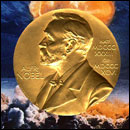
Just like a parent, every inventor has to send their child out into the world. Sometimes that child becomes a doctor or a movie star. Other times that child ends up in a clock tower with a rifle...
With that in mind we present some of history's greatest inventors who lived to see their inventions take on unexpected, terrifying lives of their own...
Orville Wright (1871-1948)

Invented:
The airplane.
Lived to See:
One used to vaporize an entire city.
EUREKA!
You know the story of the Wright brothers. December 17, 1903, Orville is the one inside the plane:
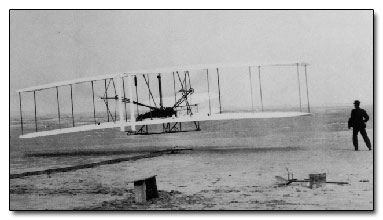
Orville had big dreams for the invention he and his brother became famous for. Really big dreams. He thought it would end warfare forever.
In 1915, Orville (his brother Wilbur had passed away by then) predicted aerial reconnaissance would make war "... too expensive, too slow, too difficult, too long drawn out" for anyone to keep doing it. After the U.S. entered WWI, Orville confidently wrote that the nation with the most airborne scouts, "will win the war and put an end to war."
Put an end to war! Awesome! Hey, how did that turn out?
CRAP!
While Orville looked at the plane and dreamed of world peace, everybody else was thinking, "Wow, those people down on the ground look like tiny ants! Ants I could totally crush from up here!"

But still, he clung to the idea. At the end of WWI, Orville wrote that "the aeroplane has made war so terrible that I do not believe any country will again care to start a war," and five years later authored a radio broadcast declaring that "the aeroplane, in forcing upon governments a realization of the possibilities for destruction, has actually become a powerful instrument for peace."
At that same moment, military engineers scratched their chins and said, "You know, we really haven't realized the possibilities for destruction in these things. We've packed as many bombs as it can carry... can we make the bombs like, way deadlier? Would that work?"
Orville Wright held to his optimism until passing in early 1948. Which means he lived long enough to see...

... the dropping of the atomic bomb. In 1945, this invention that started out as a flimsy thing that could barely skim over the ground, dropped city-flattening bombs on Hiroshima and Nagasaki. And that was the culmination of six years of devastating warfare in which city after city was shattered by aerial bombardment.
We have to say, though, it did nothing to dampen the man's spirit. In a typically on-the-bright-side letter to a friend shortly after the atomic bombings, Orville wrote, "I once thought the aeroplane would end wars. I now wonder whether the aeroplane and the atomic bomb can do it."
Which leads us to ask the obvious: You mean one of his friends actually asked him what he thought about the atomic bombs? Geez, talk about a dick move. On the bright side, Orville Wright did live to see Chuck Yeager's breaking of the sound barrier, which had to have blown his fucking mind.
Peter Carl Goldmark (1906-1977)

Invented:
The LP record.
Lived to See:
Rap DJs scratching the hell out of them.
EUREKA!
Through WWII, records were available only at 78 RPM speeds, which our older readers will remember as the awesome setting that made everybody sound like The Chipmunks. The big disadvantage to 78s was a limit of about five minutes per side. As Goldmark later recalled his 1945 epiphany:
"I was at a party listening to Brahms being played by the great Horowitz. Suddenly there was a click. The most horrible sound man ever invented, right in the middle of the music. Somebody rushed to change records. The mood was broken."

Now, if you're anything like us, your first thought is, "Holy freaking crap, that sounds like the worst party in the history of the world. If we were there our only great idea would have been to rifle through the medicine cabinet in search of high-level painkillers." And that's why we're not in the National Inventors Hall of Fame. Peter Carl Goldmark went on to create the LP (long-playing records).
You can't underestimate how it changed the way music itself was created. No longer limited to disjointed bundles of 78s, artists could create unified artistic statements, without listeners jumping up every five minutes to change discs. The Beatles wouldn't have become THE BEATLES without the format to create Sgt. Pepper's Lonely Hearts Club Band. So what could go wrong?
CRAP!

We could point to the scourge of progressive rock, the only genre developed so DJs had time to leave the studio and get stoned. Yes's "Revealing Science of God," Iron Butterfly's "In-A-Gadda-Da-Vida" and too many other tracks that last more than 15 minutes, thanks to pointless droning and endless solos, inspiring countless slurred, "No, no, you gotta hear this part coming right up!"
But the greatest indignity to Goldmark's "play lots of Brahm's uninterrupted" invention was occurring in the South Bronx, in the final years of his life. There turntable techniques like cutting and scratching were developed by a number of 70s New York DJs, notably DJ Kool Herc, Grand Wizard Theodore and Grandmaster Flash.

We can't confirm that the then 70-year-old Goldmark attended any of these parties, but you can only imagine how he would have reacted to the record scratch, the "most horrible sound man ever invented," being turned into a sound effect by guys in gold chains asking a basement full of dudes if they were ready to get the party started.
Philo T. Farnsworth (1906-1971)

Invented:
The modern television.
Lived to See:
Gilligan's Island.
EUREKA!
Already born with a ridiculous name, Philo T. Farnsworth's life story doesn't make for the happiest of reading. It's a litany of financial troubles, corporate espionage, legal battles, bad timing, heavy drinking and nervous breakdowns. But the man was a genius; he was born in a log cabin and theorized the basic principles of electronic television while cultivating a potato field at the age of 14. Yep, that's right, 14-years-old, an age when most of us couldn't theorize the basic location of our ass using both hands.

A few years later, while wooing his future wife, Philo spoke to her about his dreams: "He talked a lot about what television would do," Elma Farnsworth remembered. "He saw that television would allow people to learn about each other. He felt that if you could learn how other people live, world problems would be settled around the conference table instead of bloody battlefields. He thought that everyone in the world could be educated through television, and that it could also be used for entertainment and sporting and news events."
CRAP!
And he was completely right! Well, except for the part about learning not to hate people who are different. He was pretty far off there. As for educating the masses, we can give him the benefit of the doubt if we use the widest possible definition of "educating."
But pretty much from the get-go, any idea of television being an enriching benefit to the human race were cast aside in favor of quiz shows, adorable chimps and dancing cigarette packs with great gams.

In 1961, FCC Chairman Newton Minow made his famous speech to the National Association of Broadcasters, describing the horrors of television as a "vast wasteland." And this was decades before Flavor of Love.
Meanwhile, Philo T. Farnsworth observed all of this with an increasingly regretful eye. His son, Kent, described his father feeling that "he had created kind of a monster, a way for people to waste a lot of their lives," and summarized his attitude as "There's nothing worthwhile on it, and we're not going to watch it in this household, and I don't want it in your... intellectual diet." Had he lived, it's safe to say that Philo Farnsworth would have had the world's worst set of TiVo Suggestions.
He did soften a bit in his final years, saying that televised images of the moon landing "made it all worthwhile," but an accidental viewing ofHee Haw the next day led him to regret this brief moment of fulfillment.
Mary Phelps Jacob (1892-1970)

Invented:
The bra.
Lived to See:
"Bra-burning" feminists calling it a symbol of oppression.
EUREKA!
In 1910, Mary Phelps Jacob was struggling with her outfit, specifically with the whalebone corset that was showing through her sheer evening gown and out over the neckline. Picture a life jacket under a one-piece bathing suit and you can see just how not hot this must have been.
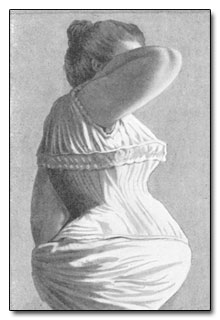
Displaying oodles of pluck and daring that's even more exciting once we realize she was probably topless at this point, Jacob refused to wear the corset, demanded that her chaperon bring her two handkerchiefs, a needle and some thread, and stitched together what she would call the "backless brassiere." Her friends gathered around her, inquiring excitedly about the new accessory, and soon all the ladies were back in the dressing room, giggling, tearing off their corsets and... oh, wait, that was actually a scene from Naughty Debutantes on Cinemax. Sorry.
In 1914, after years of selling the garments to her circle of friends, Jacob applied for and received the first-ever patent in the newly created category of "brassieres." The way women's boobs dressed changed forever.

Before the Internet, young men relied on the Patent Office for their porn needs.
CRAP!
Considering how incredibly freeing the brassiere she created was in comparison with the corset, Jacob must have been shocked that, by the time of her death in 1970, it was seen by feminists as a symbol of oppression, with a burning bra the classic image of women's liberation protests (and it was just an image, the actual burning of the bras never happened).

1968 Miss America Pageant protest. Shown: bra. Not shown: burning.
Even without the actual flames, the bra itself was socially charged, with the choice of whether to wear one being one of the simplest and most visible ways (well, depending on the temperature) that a woman could display her political views.
Knowing Mary Phelps Jacob (who lived one of the most interesting lives ever) been born 60 years later, there is no doubt that she would have gone braless. Hell, she most likely considered it back in 1910, except that it was probably a capital offense at that point.
Robert Propst (1921-2000)
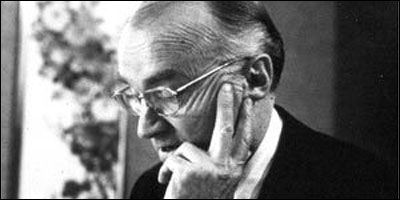
Invented:
Revolutionary open-landscape offices.
Lived to See:
The cubicle farm.
EUREKA!
While virtually unknown to the general public, designer Robert Propst's ideas have shaped our world, especially our offices. While working for a furniture company in the 1960s, Propst studied the workplace, finding it "tailored around equipment, rather than around the people that use the equipment," and concluding, "today's office is a wasteland. It saps vitality, blocks talent, frustrates accomplishment. It is the daily scene of unfulfilled intentions and failed effort."
Yeah, we know; we can't imagine what that must have been like.

Pic unrelated.
In 1968, he published The Office: A Facility Based on Change, which we didn't actually read, but it gave us an excuse to take a break and watch the episode where Jim puts all of Dwight's possessions in the vending machine and makes him buy it with nickels.
But Propst's work led to the invention of the "Action Office," a revolutionary open-landscape office system with reconfigurable, low dividers. It incorporated lots of ideas to make your work life more pleasant, including bigger work surfaces and adjustable height desks that would give you the option to work standing up if you felt like it. Offices all over the world started adapting the ideas right away.
CRAP!

Robert Propst was completely aware that a lot of you are thinking, "Wait a minute... that's the asshole who came up with the cubicle?!"
While he regretted the part he played in the modern office's "monolithic insanity," he refused to take the blame for the soul-sapping evolution of his creation. It was a fair point. Whatever utopian workplace Propst had envisioned evolving from the Action Office was soon superseded by the ever-increasing white-collar workforce and companies that liked the idea of building much cheaper modular offices rather than permanent ones.
As more and more workspaces were jammed into offices, each cubicle became smaller and more uniform, and the idea of customization was lost. Voila, the dreaded modern cube farm, or as Propst referred to them, "hellholes" and "barren, rat-hole places."

Yeah, that's almost what a smile looks like.
These days, cubicles are linked to isolation, depression, stress, contagious illnesses and countless photos of your office manager's cats and nephews. However the Dilbert comic strip industry has been thriving ever since.
Alfred Nobel (1833-1896)

Invented:
Dynamite, for mining purposes.
Lived to See:
It used to blow the shit out of many people.
EUREKA!
Alfred Nobel came from a family that liked to blow stuff up real good. His father, who had declared bankruptcy the same year Alfred was born, eventually rebuilt his wealth in the early 1850s selling explosive mines to the Russian military (still a great way to raise a few extra bucks, by the way). When the Crimean War ended and the Russian bomb cash stopped coming in, Alfred and his brothers began experimenting with ways to safely manufacture, transport and use the recently discovered explosive nitroglycerin.
"Safely" was the main issue. In 1864, the Nobel family's factory exploded, killing five employees and Alfred's youngest brother. It was this and numerous other deadly accidents that led to Nobel's invention of dynamite, a less dangerous, more easily transported form of nitroglycerin, in 1866.
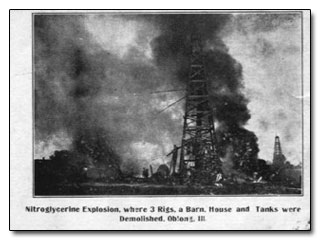
#594 from the 1865 Topps trading card set "America's Wackiest Nitroglycerin Explosions."
Dynamite, as were all of Nobel's explosive inventions, was meant for industrial purposes such as rock blasting and mine excavation. While he certainly wasn't naïve enough not to be able to imagine their dismembering potential, he believed that it was precisely this capability that might prohibit their violent use. "My dynamite will sooner lead to peace than a thousand world conventions," he wrote. "As soon as men will find that in one instant whole armies can be utterly destroyed, they surely will abide by golden peace."
Sure, we can totally see that.

CRAP!
In the annals of regret, nobody holds a candle to Alfred Nobel, and not just because any flame near him would've ignited a huge freaking explosion. Nobel's regret is celebrated annually like Christmas, and bestowed upon worthy recipients like a laurel wreath.
In 1888, after a couple of decades of armies using dynamite in various ways to blow people into chunks, Alfred's older brother Ludvig died of a heart attack. A French newspaper, having received a jumbled report, printed an obituary of Alfred instead, and not one of those nice, cheerful obituaries.
It featured the headline "The Merchant of Death is Dead," and wrote that "his fortune was amassed finding new ways to mutilate and kill." So distraught by this evidence of how he would be remembered, and probably noticing the lack of the glow that his predicted "golden peace" would have given off, Alfred Nobel bequeathed 94 percent of his fortune to establish the prizes that bear his name, honoring those who "have conferred the greatest benefit on mankind."
Holy shit, newspapers should write nasty premature obituaries more often. It seems to really make people think.

To find out about some more inventions that were a result of dumb luck, check out5 Accidental Inventions That Changed The World. Or find out about some inventions that are just plain dumb, in The 10 Most Ridiculous Inventions Ever Patented.
And go to Cracked.com's Top Picks to see we reinvented the wheel (read: ass and titties).